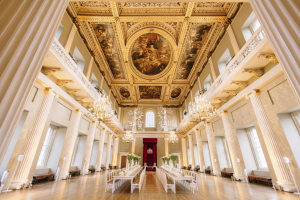Top 10 Best Carolingian Architectures
The eighth and ninth century saw the Carolingian dynasty rule all of Western Europe, and this period is known as the Carolingian Renaissance. This period gave ... read more...rise to the North European style of building known as Carolingian architecture. The Carolingians, who are credited with inventing Romanesque architecture, combined elements of Byzantine and early Christian architecture with their own unique inventive and aesthetically pleasing design. The top 10 of the best Carolingian architectures have been ranked in descending order by Toplist after a thorough examination of craftsmanship.
-
Abbaye de Charlieu, also known as Charlieu Abbey of St. Fortunatus' Abbey, was a St. Bernard order abbey situated in Charlieu, Burgundy, France.
The abbey was built in 872 as a tribute to Saints Fortunatus and Stephen, and its sponsors were Radbertus, the bishop of Valence, and his brother Edward. It was built in the area known as "Carcus Locus," or "sweet place." It was under the express supervision of the Holy See.
Gausmar, the original monk, and the others built it themselves, as evidenced by the remains discovered there.
Similar to this, the excavation provides evidence for the presence of three churches: one from the ninth century, another from the tenth century, and a church from the eleventh century, all of which are attributed to the Brionnais region.
Speaking of the architecture, the building had a wooden roof, pencil towers around the corners, and a semi-subterranean ambulatory at the eastern end.
The Philippe Auguste tower, the protective dungeon, and medieval homes are all part of the ensemble's distinctive architecture.
The Gothic cloister and the chapel from the 15th century with the chapter house that displays a colonnade are impossible to forget.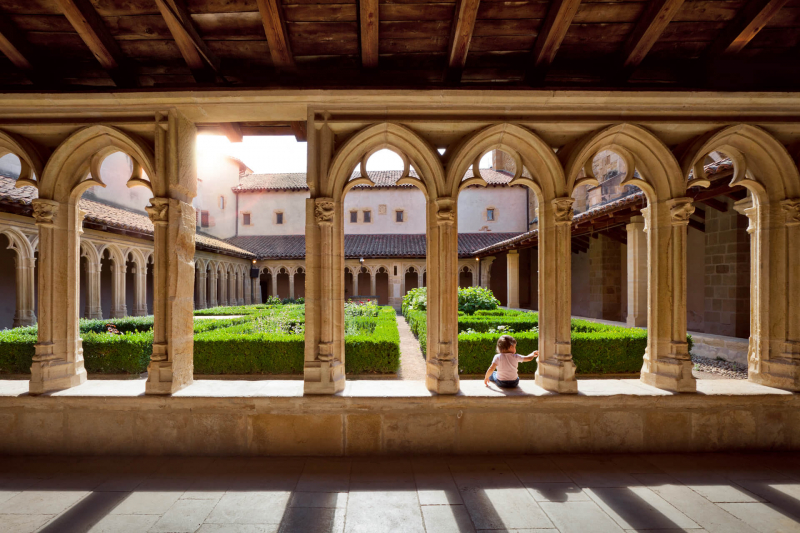
Photo: Roannais Tourisme 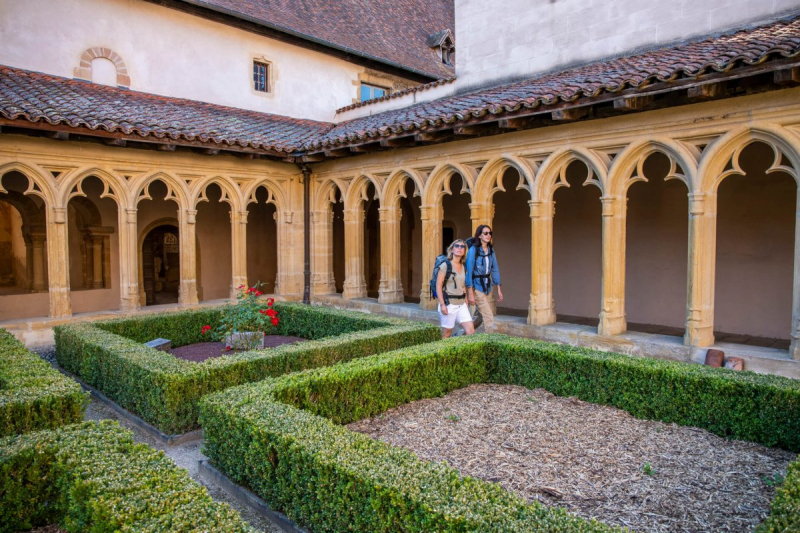
Photo: Roannais Tourisme -
One of the best Carolingian architectures, The Benediktbeuern Abbey, was founded in 739 and is regarded as the oldest and most stunning monastery in Upper Bavaria.
Anecdotally, Karl the Great gifted the right arm of the revered Saint Benedict before the 800s, which is how the name Benedicto-Burum came to be (a significant artifact). Thus, the name came to be. In the Carolingian era, the convent was renowned for its scriptorium.
The cloister was demolished and the monastery ceased to exist after the Hungary storm in 955 and the decline of the empire in the 10th century.
The church was renovated by Saint Ulrich of Augsburg, who also founded the "Sakularkanonikerstift." It didn't achieve its cultural apex until Heinrich III reclaimed the throne, though.
The cloister was where Goldsmith's skill was nurtured and where the "Carmina Burana" semantics were born.
The cloister wasn't completely refurbished in the iconic early Italian Baroque style until around the end of the 16th century.
The father of the skilled architect-interior decorator's brothers, Hans Georg Asam, also painted a fresco of the life of Christ that is scattered throughout the church. Currently, the cloister serves a variety of additional purposes, including conferences, performances, and gatherings.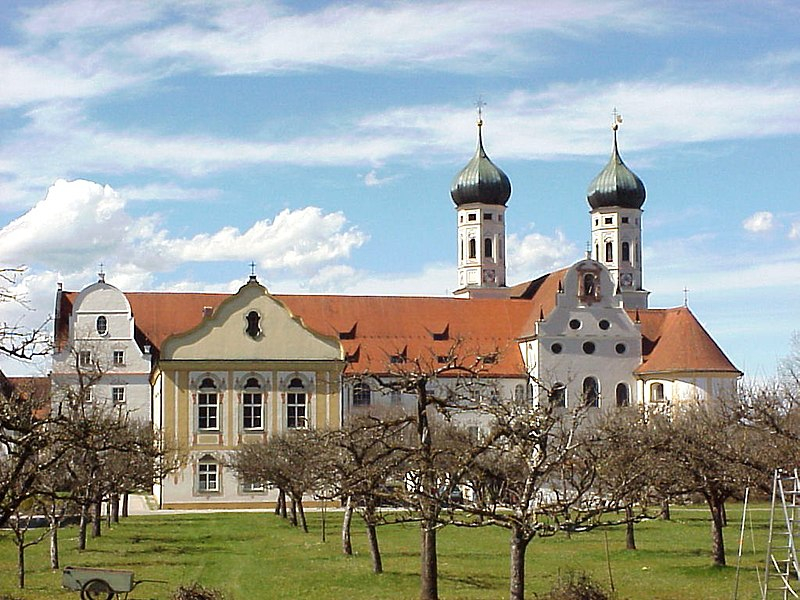
Photo: Wikipedia Video: TheWWWatson -
An Abbott by the name of Bercharius established this old Benedictine abbey on the Voir River's banks in the year 670.
The location in Der Forest was a piece of Bercharius' patrimony. As a result, it was given the name Montier-en-Der, and the hamlet that sprang up around it also bore that name.
Even though it was unnoticed during the 8th century, it gained prominence in the 9th century when it was reborn as a Carolingian estate, much of which was sparked by Hauto in or around 827 C.
The Vikings invaded with ferocity as soon as it had come to their attention, making the monks flee.
The Gorze reform and then the Cluniac reform brought about a renaissance, though, in the 930s.
In order to show the guests that not all churches had stone vaulting, Adso reconstructed the church in stone in the year 998, leaving out the roof, which was still made of wood.
The Gothic nave from the 12th and 13th centuries was replaced with a Carolingian style nave that was improved overall by the use of polished glass windows.
The codex diplomaticus, which was created in the 1120s and projects a west-Francian provenance, lavishly displays the richness and reputation of Montier-en-Der. The charters also provide excellent documentation of the then-rulers, the obligations of the peasants, and the general monastic reforms.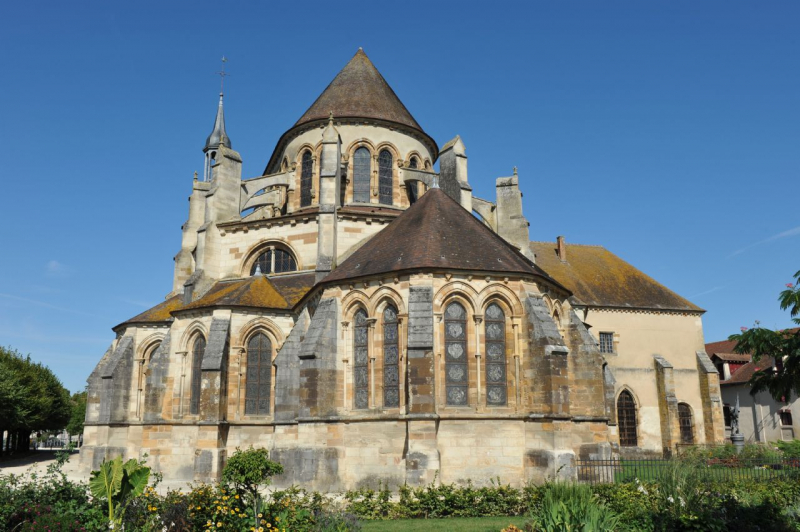
Photo: La Champagne 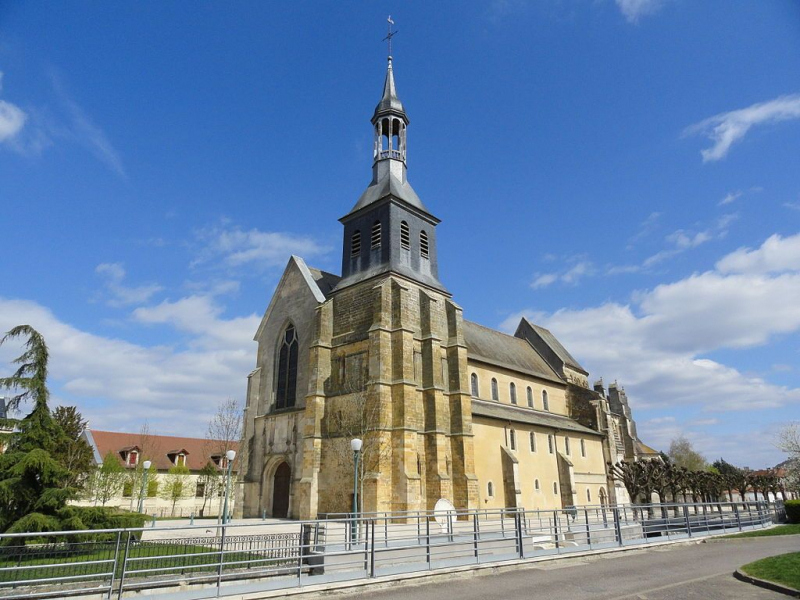
Photo: La Champagne -
In the Swiss city of St. Gallen, there is a disused alley known as the Abbey of Saint Gall which is one of the best Carolingian architectures. It was established by Saint Othmar in 719 on the site where Saint Gall had built his hermitage.
It is regarded as the pinnacle of the magnificent Carolingian monastery and owes a lot to the 18th century's building campaigns, which represent centuries of architectural evolution.
From the High Middle Ages until historicism, nearly every significant architectural era has been significantly imitated.
It is a combination of architectural brilliance made up of many buildings rearranged around the abbey's central square: on the west side is the ancient abbatial church (now the cathedral), which is surrounded by two towers and an old cloister.
There are now about 160,000 books in its High Baroque Library (still in use today).
The 19th-century structures are located in the north and include the former Catholic school, the Children's and Guardian Angels' Chapel, and the historic arsenal.
In addition to the outstanding architecture, this location is noteworthy for the unrivaled cultural significance that has been preserved.
The illuminated manuscripts of the St. Gall School from the ninth and eleventh centuries, the Irish manuscripts from the seventh and eighth centuries, documents describing the historical antecedents of the Alemannic Switzerland provenance, and the plans for the convent during the Carolingian era are just a few examples.
The only text from that time period that has been preserved in its original form represents the Benedictine order's idea of monastic organization.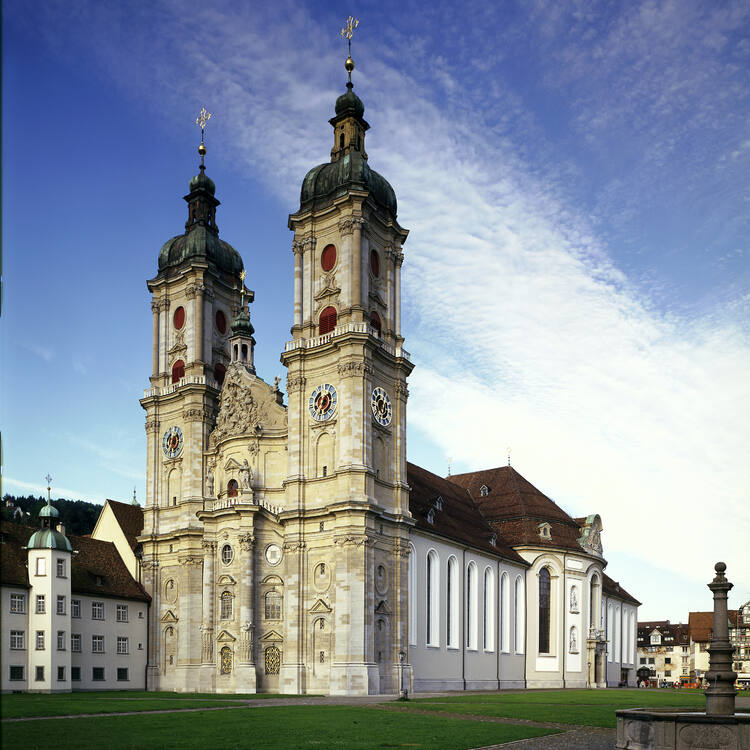
Photo: UNESCO World Heritage Centre 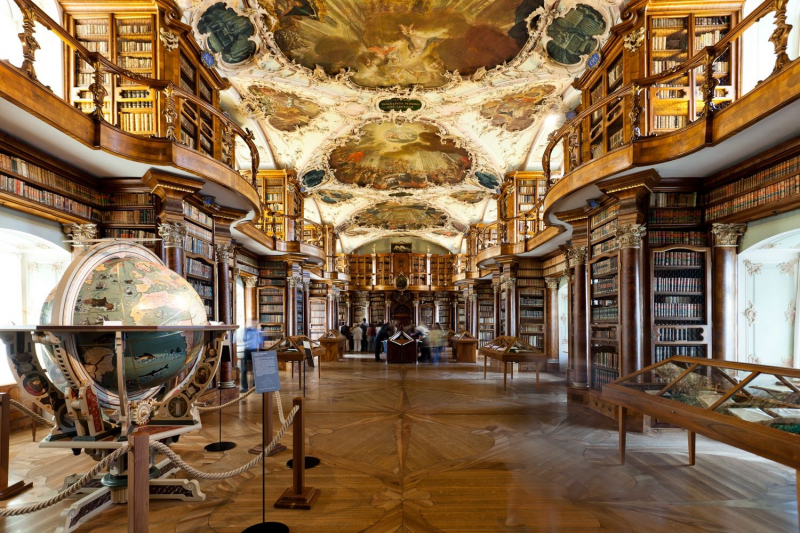
Photo: EV Flow Cytometry -
In the period between 657 and 661, Queen Balthild, the wife of Clovis II and the mother of Chlothar III and Childeric II, founded Corbie Abbey, a former Benedictine abbey in Corbie, Picardy, France.
Its significance dates back to the early Carolingian era, when both the scriptorium and the library were revered.
There are allegedly catalogs from the eleventh and twelfth century in the library.
It is regarded as the center for the transmission of the works of Antiquity to the Middle Ages, together with the patristic texts.
The Corbie also has a scriptorium, which at a time when the practice was still relatively unheard of in Western Europe, became the hub of manuscript illumination.
The Carolingian minuscule and illumination style both originated in this region. Corbie was also given a job in a script lab for the same reason.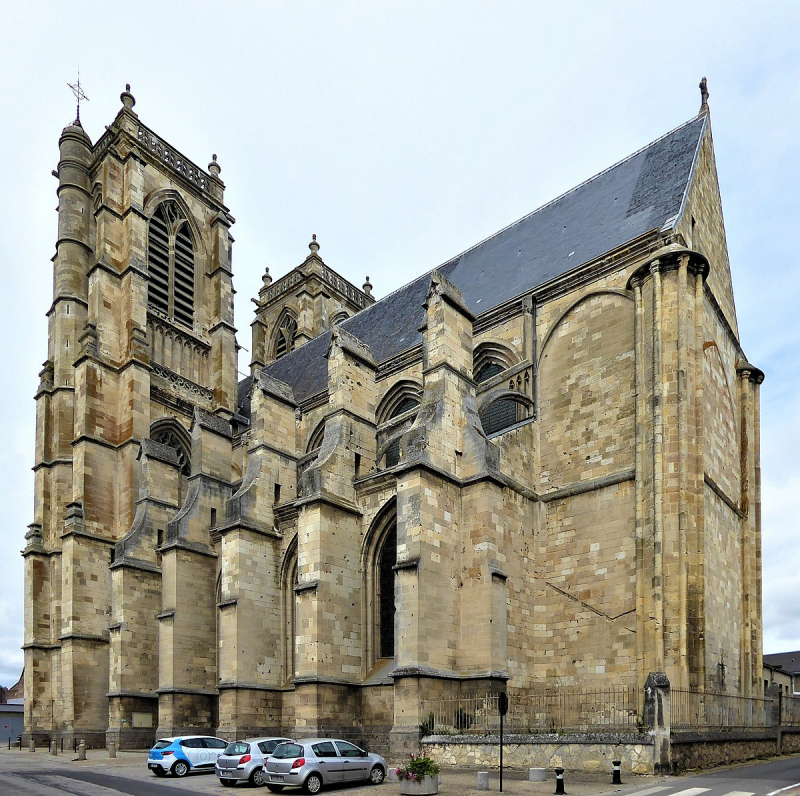
Photo: Wikidata 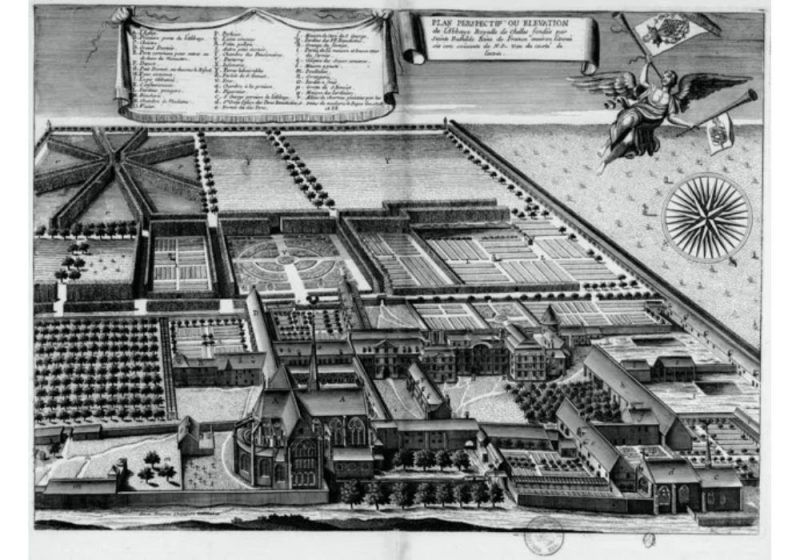
Photo: historyten.com -
Early in the Middle Ages, Chelles Abbey (French: Abbaye Notre-Dame-des-Chelles) was established (c. 658).
It was initially planned to be a women-only monastery, but it drew a lot of males who wanted to experience a traditional way of life.
A masculine community was later effectively built by accepting dualism.
It was well-known for its scriptorium, where nine illustrious nuns used to write down documents, and of course for its connections to the ruling class of the time.
The traces reveal that the manuscript illumination was in a very quaint writing style, despite the fact that there is little to no proof of it.
Overall, the Chelles scriptoria are regarded as the most productive and intellectually average of the 8th and 9th centuries.
However, it was destroyed by the French Revolution and the dissolution of the Catholic Church in 1792. And became one of the best Carolingian architectures.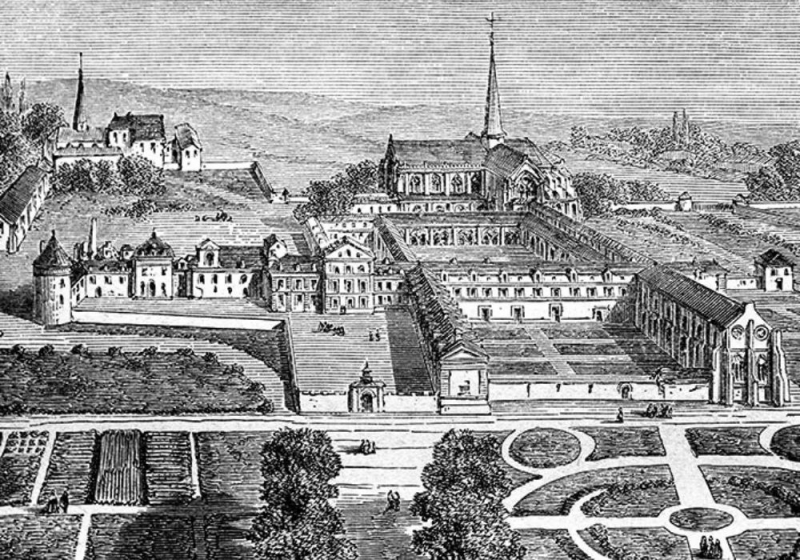
Photo: historyten.com 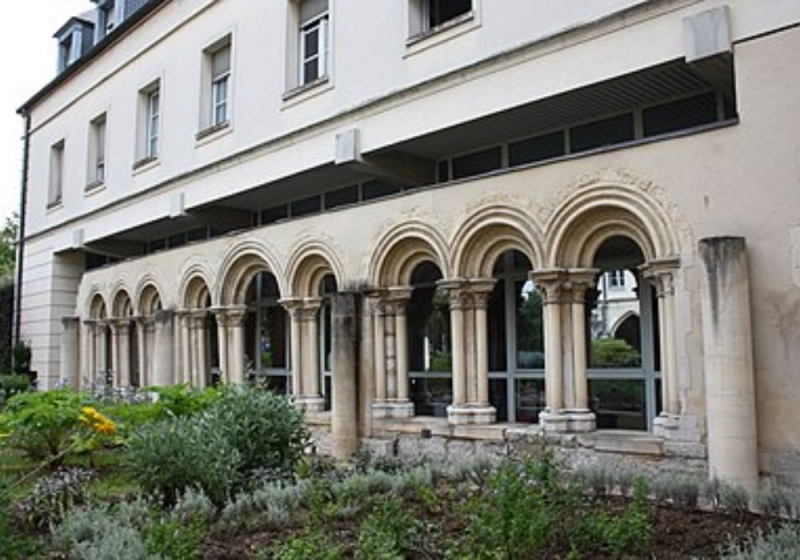
Photo: OpenTripMap -
Lower Franconia, Bavaria, Germany is home to Amorbach Abbey, also known as Kloster Amorbach, which was formerly a Benedictine religious community.
It resides in the Royal House of Leiningen, one of the oldest noble houses in Germany, and is one of the other quadruplets of Carolingian foundations meant to establish Christian religion.
The German Peasants' War in 1525 marked the end of the abbey's productive years, which lasted only until the early 16th century.
After being rebuilt, the late Baroque style took the place of the romantic-gothic style in the 1740s.
It is currently the center of the expansive religious grounds that house instruments and acoustics. The vast rooms and library, not to mention the lovely lake and garden, are impressive.
The royal abbey is currently owned by Andreas Prince and Alexandra Princess.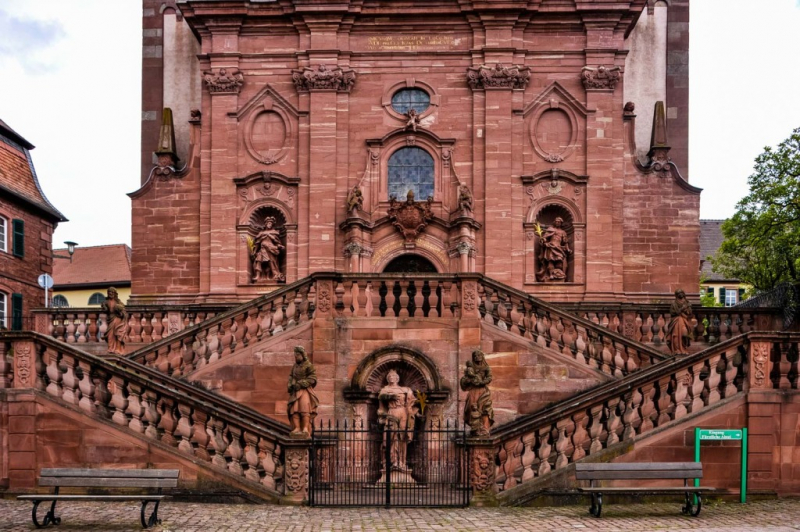
Photo: Barnum Review 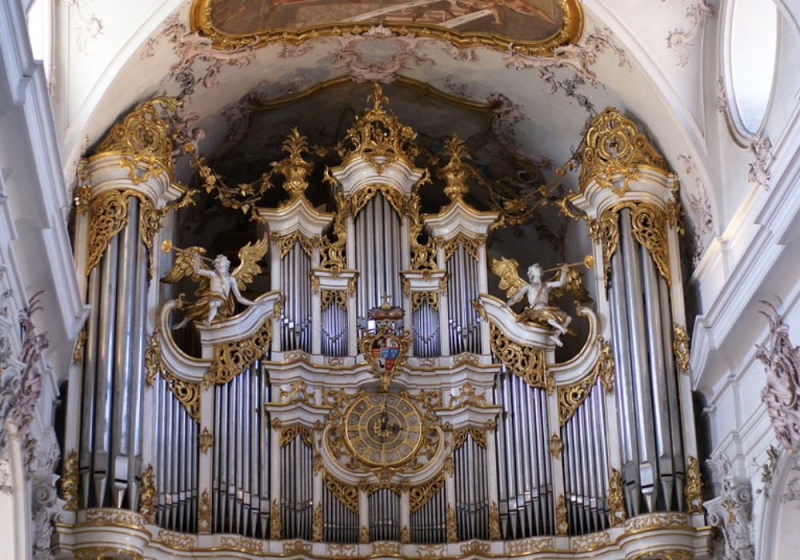
Photo: Spotting History -
Since its foundation in 560 to hold the relics of the same-named bishop of Noyon, Saint Medard, the Abbey of St. Medard has endured for 1500 years. This Abbey was hailed as one of the major spiritual and political hubs of early medieval France not long after it was founded and one of the best Carolingian architectures.
The abbey rose to new heights in terms of importance when it acted as the crematorium for Clotaire and Sigebert, the son and grandson of Clovis, the founder of the Merovingian dynasty, respectively.
The Carolingian dynasty was established when Pepin the Short was crowned king of the Franks in the same abbey.
The spectacular Crypt and regal Mausoleum, which has ten chapels interlaced with arches, the walls adorned with gilded royal sculptures, the entrance that resembles a castle, the Tower of Abelard, and the Roman pillars are a few of the site's primary attractions.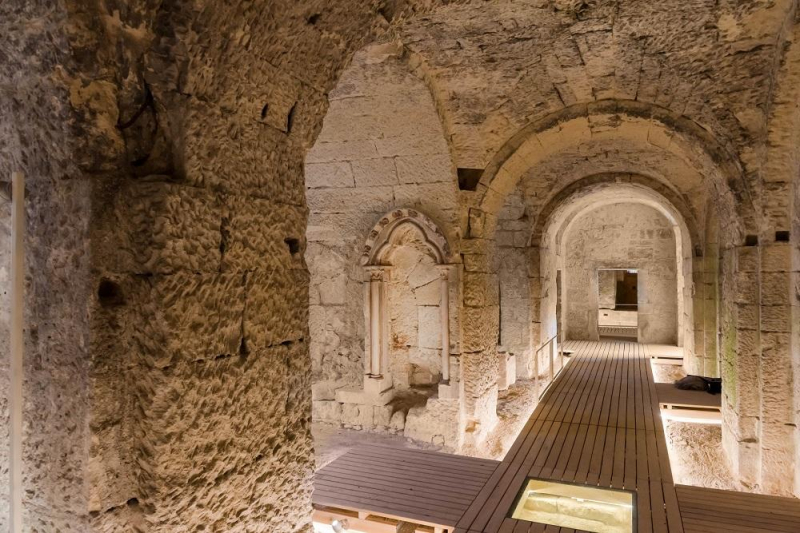
Photo: tourisme-soissons.com 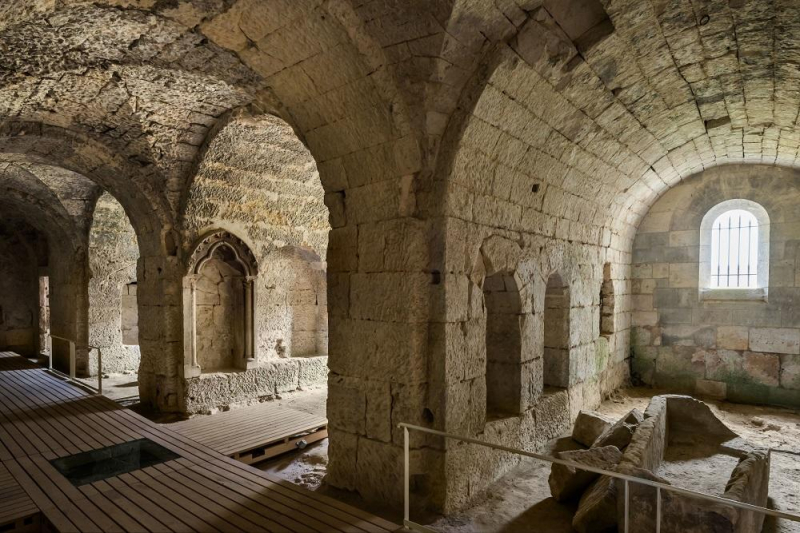
Photo: tourisme-soissons.com -
This Benedictine monastery was established in Echternach, in eastern Luxembourg, in the seventh century by St. Willibrord, who is also known as the patron saint of the country.
After Beornrad, the third abbot of Echternach, passed away, Charlemagne took control of the abbey. Willibrord's ancestry in Northumbria and Ireland had a significant impact on the works at the abbey.
In the Frankish empire, Echternach fostered well-known scriptoria. The manuscripts created here are known to have been both insular and Roman half-uncial scripts, and are best known for generating four gospels: the Augsburg Gospels, Maaseik Gospel, Trier Gospels, and the Freiburg Gospel book fragment.
Under the patronage of Pepin the Short and Charlemagne, it played a crucial part in the growth of the early Carolingian Renaissance. Alcuin combined the two designs during their rule to create the Carolingian minuscule, which ruled the succeeding centuries.
It provided entertainment during a period of intense joy and power - both spiritually and temporally. The Frankish nations were overthrown by the civil war, along with the abbey's authority.
The St. Willibrord Basilica and a secondary school are both included in the abbey museum, which is housed in the vaulted vaults of the ancient abbey. This was reestablished in modern times, in the middle of the 19th century, in a neo-roman style.
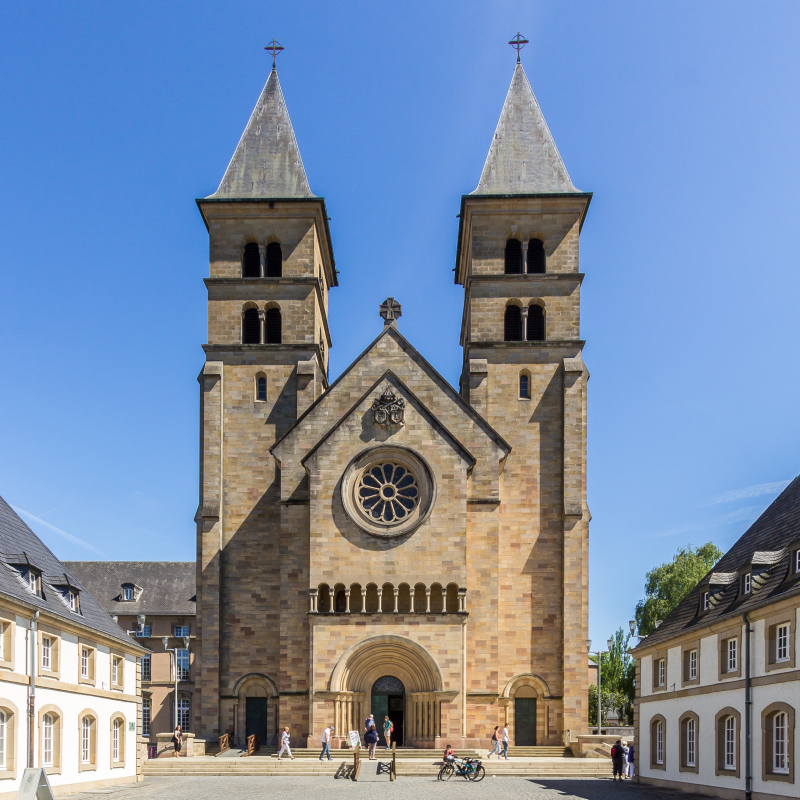
Photo: Wikipedia 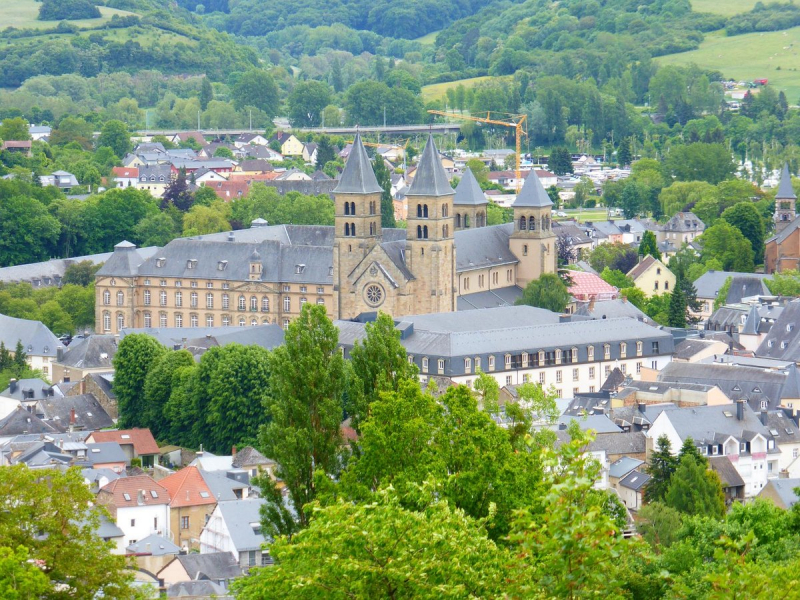
Photo: TripAdvisor -
Faremoutiers Abbey was a Merovingian Benedictine nunnery founded by Burgundofara around 620 and seen as a link between the Merovingian Frankish Empire and the southern Anglo-Saxon kingdoms.
It became a twofold monastery, the first of its sort in France, by simultaneously incorporating the nuns and the monks.
The strict Rule of Saint Columbanus was followed by the Faremoutiers Abbey (French: Abbaye Notre-Dame de Faremoutiers). It was formerly known as Evoriacum, but in her honor, the name was changed to Faremoutiers (Fara's monastery).
The abbey flourished twice: the first time was during the Middle Ages, which was mostly characterized by saints; the second time, the abbesses were distinguished women: Francoise de la Chatre and her niece, Jeanne de Plas, who were chosen by the King.
During the French Revolution, it was disbanded, and the structures were destroyed. The Faremoutiers were rebuilt in 1931 by Bishop Gaillard of Meaux with the assistance of Benedictine sisters from the priory of Amilis, and they are still in operation today.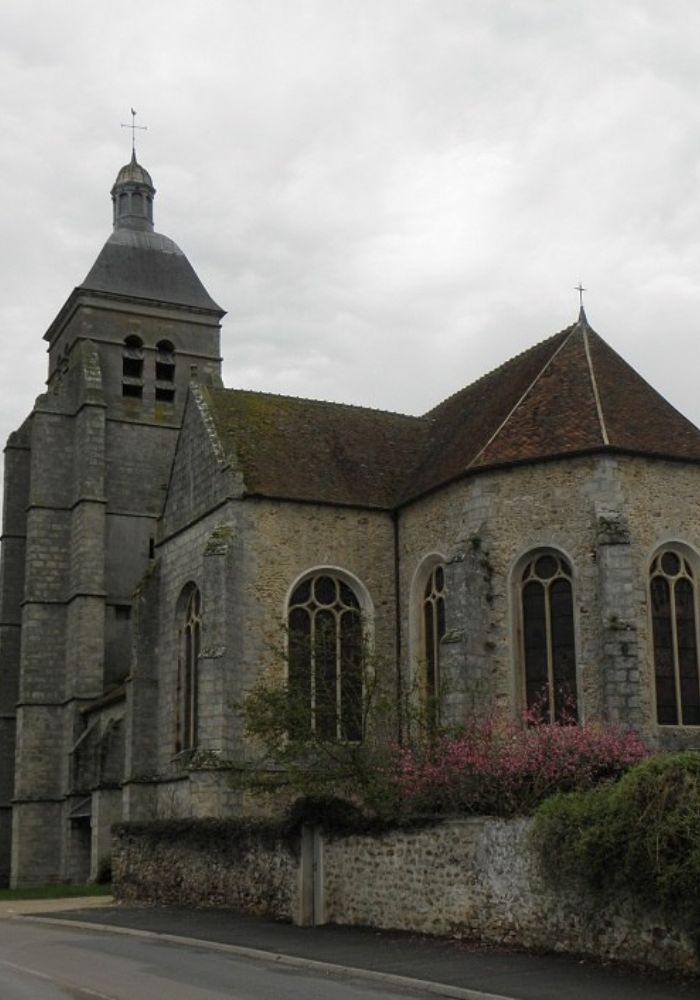
Photo: Mapcarta 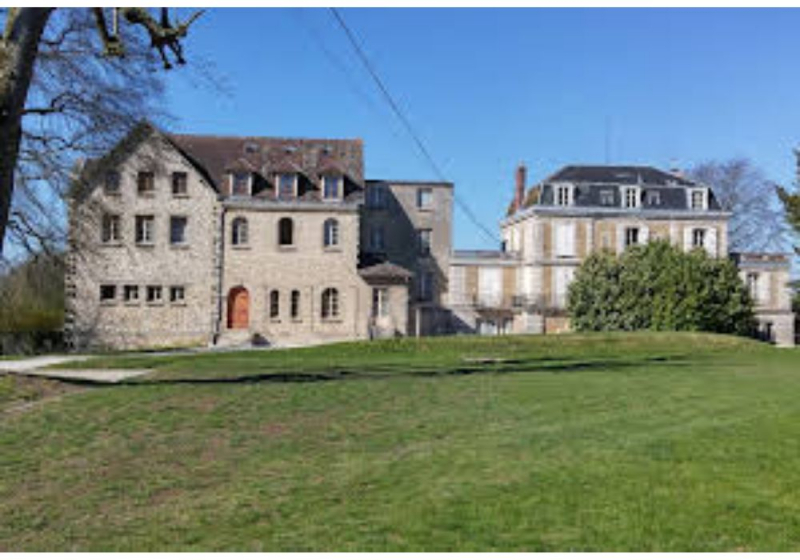
Photo: Google












